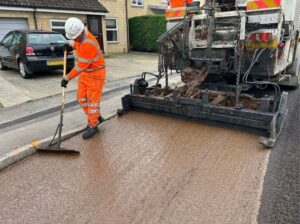Christina Liassides of Gaist on the importance of utilising technology to deliver resilient roads.
Well-maintained, resilient roads underpin flourishing local economies and communities.
But those responsible for developing local highways strategies face multiple challenges: Constrained budgets, sustainability pressures, increasing customer expectations and the need to conform to the highest safety standards.
Responding successfully to these challenges and delivering roads fit not just for today but also for the future, means that robust systems and processes, utilising the latest technology, are key tools for every highways decision maker. These need to be underpinned by detailed data and the fullest information possible on the condition of assets.
And this rigorous approach should extend to the scheme identification stage – the identification and assessment of which programmes of works need to be undertaken and in which order.
Yet too often, decisions are being taken with limited or poor data. This results in poor maintenance planning and a greater need for urgent, expensive and disruptive unplanned repairs.
The Gaist Way
At Gaist, our approach to the complex activity of maintenance works planning and programming has been shaped and informed through our 15 years of experience working with local authorities and understanding their needs.
The high-quality systems we have developed to capture and analyse detailed insights about the local road network are some of the most advanced of their kind globally.
Using this detail, we support local authority decision makers to develop scheme lists to meet their specific criteria and to enable them to implement an effective and value-for-money series of planned works.
Our approach is helping to support sustainable local roads and resilient local economies. It is also supporting the country-wide need for inclusive and accessible places and the healthier lifecycles achieved through more cycling and walking.
How we work
Our focus is always to provide the most appropriate level of support for each of our clients which is why we offer a scheme identification approach tailored to each of our customers, from standard parameters and scheme sizes to completely bespoke inputs and outputs based on specific requirements.
Working closely with our customers’ highways engineers, we use the detailed condition data we capture for every section of the highway to calculate optimal schemes for the entire network.
To ensure we are working from the most comprehensive base of information possible, we can supplement our own condition data with other types of data such as SCRIM data, enabling the data to work best for our customers.
Our algorithms, developed over 15 years of working with Local Authorities, can estimate the cost of each scheme – whether for carriageways or footways – based on customer unit rates for each type of maintenance activity. We are able to then further refine and rank schemes based on any additional local priorities and advise on maintenance treatment options, all completely tailored to our clients.
Our highly accessible and accurate map-based data means you can view out-in-the-field locations and discuss potential schemes from your desktop – removing the need for the traditional early site visits.
We would love to discuss how we can help you optimize your highways maintenance activity. For more information on the scheme types we offer, please contact [email protected].






















